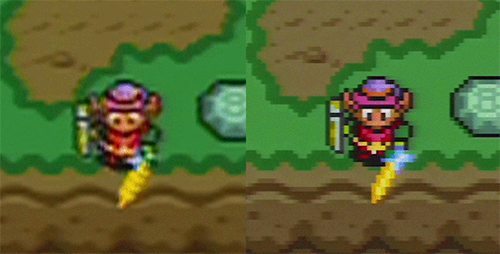8-Bit Archaeology
Retro gaming is a culture that holds a soft spot for any kid born in the '70s or '80s. Here's a deep dive into the world of retro gaming enthusiasts.
Today in Tedium: Here's something you probably don't know about me. For a couple years in the late-'90s and early 2000s, I got my sea legs in writing from a little site called Zophar's Domain, a console emulation enthusiast site. At the time, ZD held a kind of legendary status among retro gamers, and though it's aged some, it's still around. (Here's what it looked like when I was there.) I'm not really much of a gamer anymore, but this stuff still holds a place in my heart. Retro gaming is a culture of its own, and one that holds a soft spot for any kid born in the '70s or '80s. In today's Tedium, we do a deep dive into the at-times-odd world of retro gaming enthusiasts. — Ernie @ Tedium

Making the grade
If you have a copy of Bandai's Family and Fitness: Stadium Events sitting in your living room, stop everything you're doing right now and get that NES classic inside a hard-shell acrylic case. Then dig out your eBay password. You're holding on to literally the most valuable video game ever sold in stores.
The game, which came out in 1987, is known to most gamers as World Class Track Meet, one of the pack-in games for the Nintendo Power Pad and perhaps one of the best-known games for the console. That game's owned by millions of people. But for a short period prior to its rebranding, it was produced by Bandai under Stadium Events, with fewer than maybe 200 copies making it to the outside world under its original title. Maybe one or two still have their original packaging.
And some people are willing to pay massive amounts of money for a copy of the game in good condition. The problem with selling it however, according to Wired, is that eBay auctions for such video games are often the targets of trolls who artificially inflate the price. Seller beware, apparently.
Anyway, if you have a game you think might be worth more than a credit at GameStop, Video Game Authority—which maintains a detailed rating system for games, much like you might find for baseball cards—can help you figure out how much your game is worth.
And if you think games are more fun if they're never opened and kept behind hardened plastic, here's a forum for you.
162mph
Classics Brought Back to Life
- The first popular emulator for the NES—in other words, the first one that played games well enough to turn your Packard Bell into an NES-like experience—was called Nesticle, which was a play on words related to "testicle." Beavis and Butthead would be proud.
- Console emulation isn't officially sanctioned on most mobile devices, but that hasn't stopped some from getting around the limitations through jailbreaks, some clever browser hacks, or, in a few cases, some clever smoke and mirrors to make the app look like something else.
- Perhaps one of the best ways to get a full picture of retro enthusiasm in action is to check out the world of ROM hacking, in which gamers take apart the old code of a video game and rewrite the game to their specifications. Some of these hacks may be as simple as changing the graphics, but a few—like Mario Adventure, a complete re-do of Super Mario Bros. 3—turn hacking into a straight-up art form, one that stretches the definition of what can be done with a game.
- The role-playing game, which really caught heat in Japan in the '80s and '90s, is a genre known for its rich storytelling and quirkiness. But when there isn't perceived to be a market for such a game, games created in Japan, good ones, would fall on the backburner, failing to see release due to the considerable cost of translating such a game. Which means that fans had to step in and do the dirty work. Perhaps the best known translations of this kind are Final Fantasy V, which later saw American release on more modern platforms, and Mother 3, a long-delayed Gameboy Advance game that was effectively a sequel to the much-loved Super NES game Earthbound.
- Emulation also enabled the modern trend of speed-running, or the trend of beating a game as quickly as possible, even if it means breaking the game to do it. The trend is becoming pretty significant in scope—and thanks to the charity event Awesome Games Done Quick, speed-running is actually having a mainstream moment and can drive millions in donations for charity. Pretty cool, huh?
10k+

Pixel perfect in HD: Not so easy
So, let's say that you happen to have an old console lying around. Lucky you, but there's just one problem, and it involves your fancy HDTV.
Technically, there's nothing stopping you from pulling it off. If you have any RF cables, you can connect your old Sega Genesis or Atari Jaguar to any modern TV. But you probably won't be impressed with the results you see. The reason for that is simple: LCD TVs tend to upscale the images, which looks OK when you're watching Forrest Gump or a Three's Company rerun, but totally screws up the appearance of a game that was designed to look good on a pixelated CRT.
Even worse, consoles don't support HDMI, just composite RCA cables, which means that the video quality not only looks rough, but there might even be a lag in the video that it spits out. And as any twitch-type knows, a second of lag can be the difference between kicking M. Bison's butt and being stuck trying to take down Balrog.
But there's good news, subculture fans. You can spend hundreds of dollars to buy devices that can make dated consoles look better than they ever have. Buying an upscaler, a device that converts the resolution of a video game to something approaching view ability, isn't cheap, but boy, does it make a difference. And there's one in particular that might just blow your mind.
Back in August, the YouTube video series My Life in Gaming highlighted the killer device you can buy to fix this problem once and for all. It's called the XRGB-mini Framemeister, and it puts the screen quality of your old system on a pedestal. But wait, there's more: hosts Coury Carlson and Marc Duddleson point out that there's actually a form of video, uncommon in North America but big in Japan and Europe called RGB that can make your games look so impressive that you might as well just quit your job and play video games for the rest of your life.
"This is an incredible level of quality that most people don't even know their retro consoles can produce," Duddleson explains. And it's hard to debate the results, shown above.
This, of course, requires you to spend more money on SCART cables, as well as on modding old-school consoles like the NES to be able to support all these fancy features.
And as you can imagine, all of this stuff gets expensive. The Framemeister alone will put you back more than $300, and has to be imported from Japan. SCART cables cost around $15 a piece. Perfection costs money, but there are people willing to spend on perfection.
If buying a $300 device that can upscale your games is out of the question, there's always the Retron 5, a five-system clone console which relies on emulation and includes an HDMI-native connection, meaning your games will look super impressive, but it's not technically the real thing, so avoid impressing your nerdy friends.
How much do you love your childhood? How much are you willing to spend to ensure that a few embers from said childhood stick around in your life? Nothing? A couple thousand bucks? Perhaps, if you were a fan of Family and Fitness: Stadium Events, even more? For some people, a game of Tetris or Candy Crush is more than enough; for others, they want to bring back Yo Noid or Crystal Castles exactly the way they remember it when they were seven, down to the pixel. We need more obsessive people like these, because they're the ones keeping our memories alive.
A few months ago, I had a chance to interview Jason Scott, the guy who has turned the Internet Archive into a retro gamer's paradise in recent months, abut digital preservation. He noted that the public doesn't understand how our history is going away faster than ever, thanks to things like the cloud. Scott has been working to save all this stuff. He wouldn't be putting all the work in if he didn't care. More people should. These may be simple games, but they're also our history.
It's OK to be an obsessive about this stuff.
:format(jpeg)/2018/04/rsx6yaebccewi40omb2w.gif)
/2018/04/rsx6yaebccewi40omb2w.gif)

/uploads/ernie_crop.jpg)